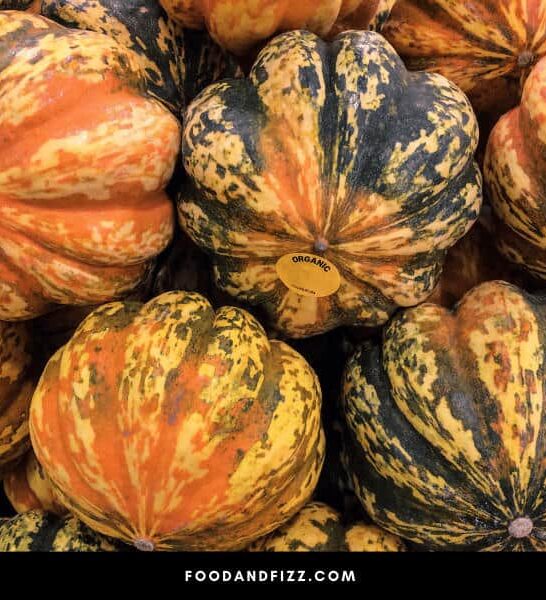Since you’re reading this article, it’s fair to assume that your acorn squash has turned orange, and you’re wondering, “What the heck, can I still eat it?”
Some acorn squash grows orange from the outset, and I further assume you know that. If not, you are in the peculiar position of trying to fix a problem that doesn’t exist, lol.
On its own, acorn squash grows in four colors (dark green, tan, yellow, and orange). Is there a cause for pause? Can we discern any concern when a non-orange-colored squash turns orange during storage? If that happens, should we worry, and if so, what should we do about it?
What To Do If Acorn Squash Turned Orange
When an acorn squash has turned orange, cut it open and examine its insides to determine if the squash has become overripe. Mold or slime on the insides of acorn squash proves that the squash is bad and is therefore no longer fit for human consumption. Throw away any squash that is moldy or slimy inside. Also throw away any soft-to-the-touch acorn squash when such softness combines with a limp stem, an orange color, or both.
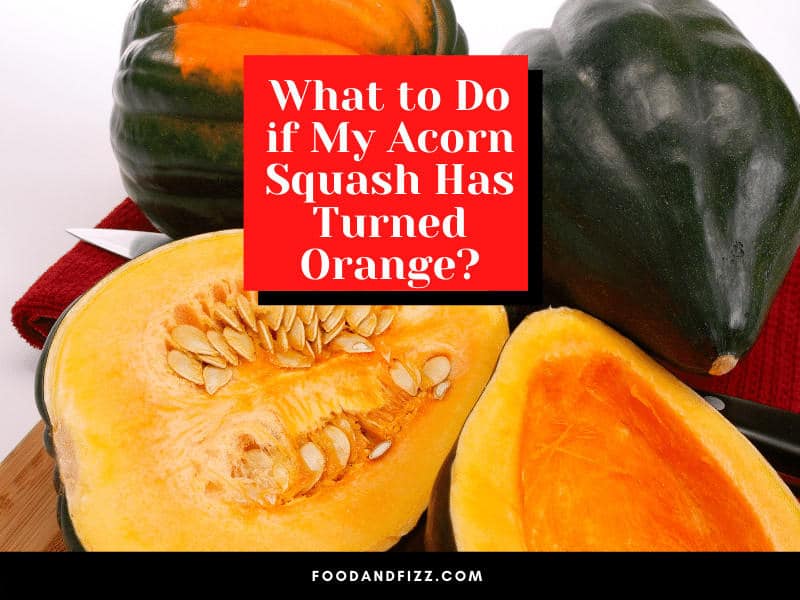
What Does it Mean When Acorn Squash Turns Orange?
When acorn squash turns orange (note the emphasis on the word “turns”), the squash has gone from ripe to overripe. How far overripe your acorn squash has gone is the nub of the problem.
A little overripe is hardly here nor there, but merely a question of your personal taste. Too overripe, and there’s the possibility of illness.
Disease from eating overripe acorn squash can range from an upset tummy to inconveniently frequent bathroom visits to a vanishingly rare visit to the ER. (I’ve never actually heard of anyone going to ER on the back of bad squash.)
Know Your Acorn Squash
Squashes are a vegetable gourd, rather like zucchini and butternut squash. Zucchini is a summer squash, but butternut and acorn squashes are both winter squashes, meaning that they grow vines, and large, long-lasting gourds.
You will be familiar with one popular winter squash/gourd if you live in America–the pumpkin. Like its more illustrious cousin and all the other winter squashes, it is easy to store acorn squash for several months, as long as we store the squash somewhere dry and at a mild room temperature.
Given that winter squashes can keep for a long time without spoilage, it takes some doing to see them turn orange. The most likely reason isn’t that folks have kept their squash for too long.
Instead, it would probably be because a bit of moisture has infiltrated the storage space, or temperatures dropped too close to zero. Either way, in the wrong storage conditions, all bets are off, and it isn’t long before owners notice their acorn squash changing into a yellowy-pink, which gradually darkens to orange.
Examining an Orange Acorn Squash – 5 Signs to Know
When acorn squash is overripe, it gets moldy. Also, overripe acorn squash can get slimy, so the presence of either mold or slime is a dead giveaway that your squash has “gone off.”
There are a couple of ways to tell from the outside whether an acorn squash has gone bad, but such examinations can result in “false positives”–conditions in which you might throw away perfectly edible squash.
1. The way acorn squash looks on the inside
The best way to examine the suspect orange acorn squash is to cut it open and look at its insides. Look for slimy grey seeds instead of healthy white or cream-colored seeds. See if its flesh is dull and tired-looking instead of that lush, vibrant color of healthy, ripe squash.
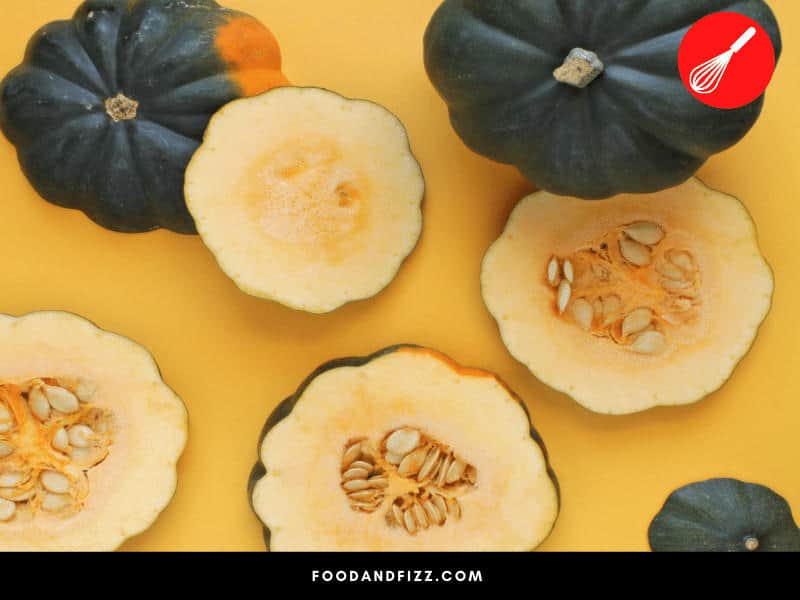
2. The way acorn squash feels to the touch on its inside
Sometimes, squash can fool you by skirting too close to the edge of looking “off” for you to tell visually. This is when it is essential to resort to feeling its flesh.
When healthy, acorn squash’s flesh is firm to the touch, but when overripe, its flesh is soft and “soggy”(you’ll know what I mean if you ever have the misfortune of handling squash that’s gone bad).
Oftentimes, you’ll find firm and soft parts in the same squash. I believe some hardy types cut out the infirm bits and go ahead with the rest of the squash as if nothing has happened.
Frankly, these are souls with greater intestinal fortitude than I’m willing to offer, so fair play to them, but, as Samuel Goldwyn famously used to say, “Include me out.”
3. The way acorn squash feels to the touch on its outside
Gourds are naturally firm to the touch when healthy and ripe. Thus, a squash that feels squishy and tender indicates being past its throw-away date.
It might still be a good idea to cut it open and look inside, but when squash is mushy to the touch on its outside, it is generally already well on its way to being a goner inside.
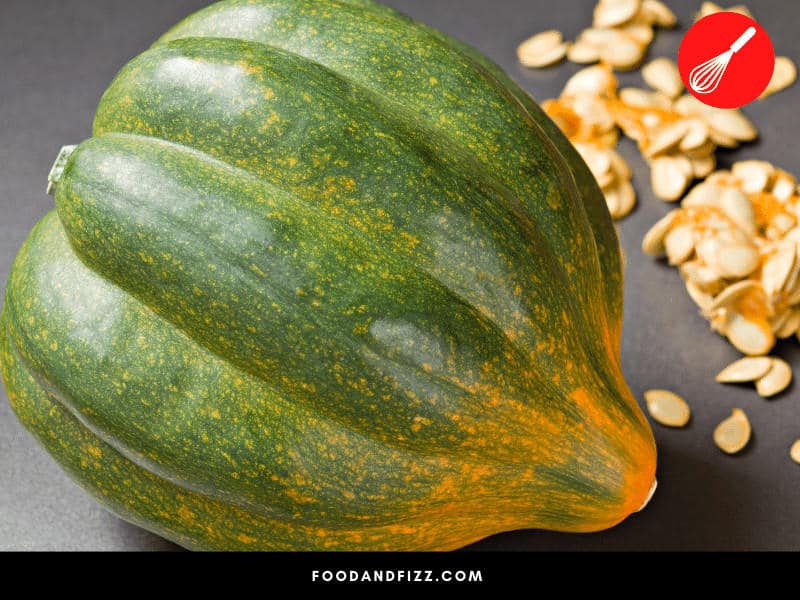
4. The way acorn squash sounds when you knock on it
Using the second knuckle of your middle finger, try knocking on the shell of the squash. If it returns a hollow sound, you’re good to go. If, instead, you hear a dull thud, drop it like a hot potato and jog on.
Healthy gourds keep their water content where it should be, firmly inside their flesh. Overripe gourds tend to have their water content squishing around and betwixt cell walls, so when you knock on their outer shell, the sound produced by the knocking gets “swallowed” up by the loose water, which results in the thudding sound.
In healthy gourds, the sound you make easily passes through its hollow inside and exits as a “knock.”
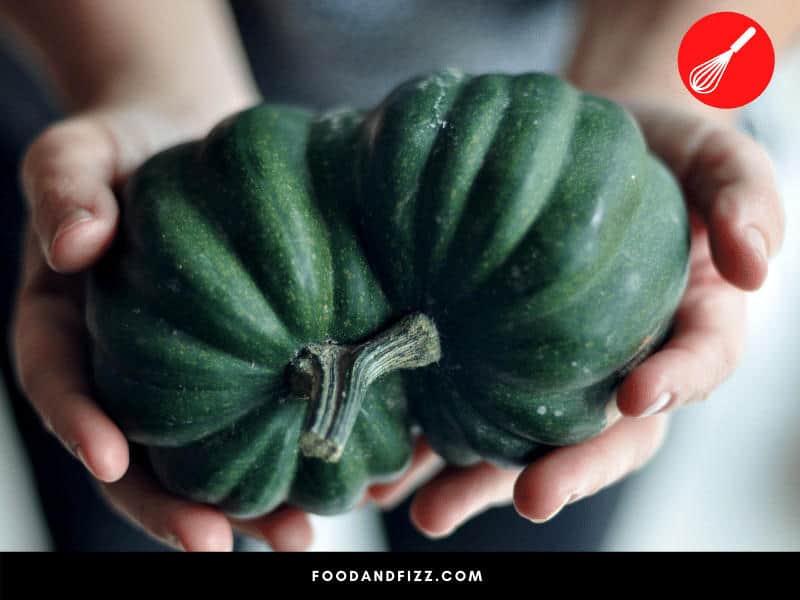
5. The way the stem of an acorn squash looks
Healthy acorn squash has the energy and chemical resources to keep its stem up and firm, like a gourd on Viagra®. On the other hand, like an old man who’s lost his prescription, overripe acorn squash sports a limp, rather sorry-looking stem. It’s a solid indicator of a dud squash.
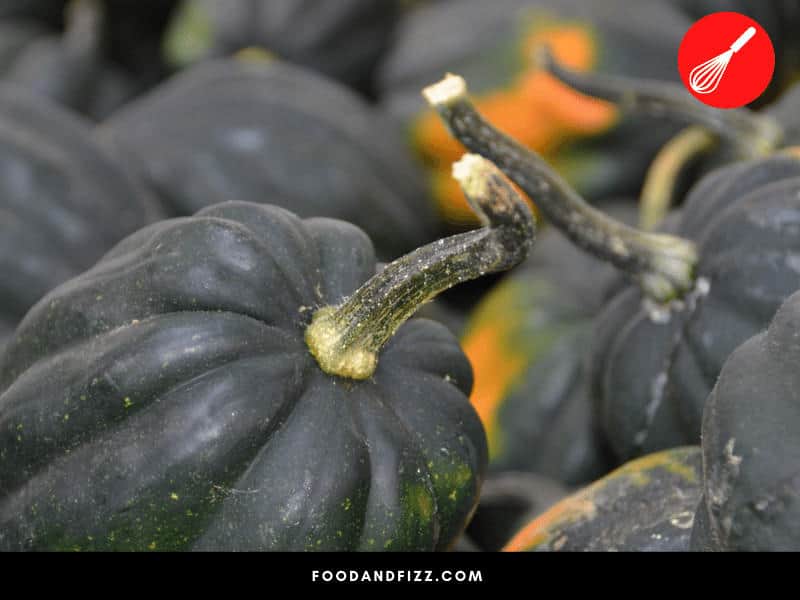
Afterword: What To Do If Acorn Squash Turned Orange
Unlike, say, bananas and many other fruits, because acorn squash is a gourd rather than a fruit, it doesn’t grow sweeter to the same degree as it ripens.
At some point earlier than fruits would, squashes turn orange, moldy, and/or even slimy, becoming rather horrid to the taste and probably detrimental to health. Although turning orange isn’t a promise that your squash has gone bad, it is definitely a visual warning bell.
Frequently Asked Questions About What to Do If My Acorn Squash Turned Orange?
How can I tell if my naturally orange acorn squash has gone bad?
Since the best way to tell if a squash has gone off is by physically examining its innards, very little changes if you have bought orange-colored acorn squashes. You could rightfully expect some discoloring, but nature offers few guarantees, and you might be hard put to tell between discolorations due to aging and those due to overripeness.
How much orange can acorn squash have before I ought not to buy it?
Some orange towards the bottom of the squash indicates that it is ripe and ready to eat. As long as you plan to eat it soon and not keep it in storage for months, I’d say it’s perfectly fine to buy acorn squash with a few patches of orange. However, make sure that the orange-colored bits are near the bottom of the squash, that the squash has a firm stem, and that all over the outside is hard to the touch. Do not purchase any squash that is soft to the touch.

